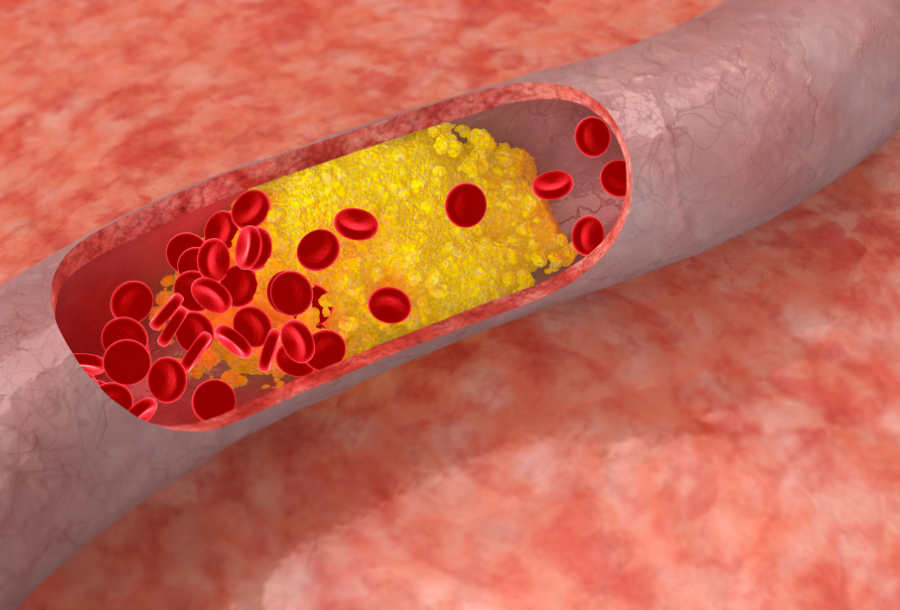
How do you know if you have prediabetes?
April 1, 2025
Prediabetes occurs when blood sugar levels are elevated but not high enough to be classified as diabetes. It often goes unnoticed, yet early detection is important—studies show that 35–50% of people with prediabetes may progress to type 2 diabetes within five years. The good news is that, with the right lifestyle changes, prediabetes is often reversible.
Key risk factors:
- Daily habits:
- Sugary drinks (46% higher risk with 3+ weekly).
- Lack of exercise (less than 150 minutes weekly).
- Poor sleep (under 7 hours per night).
- Health/family history:
- Overweight, obesity, or fatty liver disease.
- Family history of diabetes.
- Age 45+ or a history of gestational diabetes.
Warning signs to watch for:
- Darkened skin (neck, armpits), skin tags.
- Fatigue, blurred vision, or slow wound healing.
- Increased thirst, frequent urination, or tingling in hands/feet.
Quick comparison of blood sugar tests:

If you’re at risk or notice symptoms, consult a doctor for testing. Early action, like losing 5–10% of body weight, exercising, and eating more fibre, can prevent or delay diabetes.
Who is at risk for prediabetes?
Understanding what puts you at risk for prediabetes is key to catching it early. Shockingly, over 80% of people with prediabetes don’t even know they have it.
Daily habits that increase risk
Your daily choices play a big role in your prediabetes risk. For example, research shows that drinking more than three sugary drinks a week can increase your risk by 46%.
Here are some common habits and simple changes to help lower your risk:

Health and family history risks
Your personal and family health history also plays a big role in prediabetes risk. Conditions like being overweight, having non-alcoholic fatty liver disease (NAFLD), or having a family history of diabetes can significantly increase your chances. For instance, having a parent or sibling with type 2 diabetes nearly doubles your risk.
Some key health-related risk factors include:
- Overweight or obesity
- Non-alcoholic fatty liver disease (NAFLD)
- Being 45 years or older
- Polycystic ovary syndrome (PCOS) – More than half of women with PCOS develop type 2 diabetes by age 40
- A history of gestational diabetes or delivering a baby weighing over 9 pounds
If one identical twin has type 2 diabetes, the other twin has a 75% chance of developing it. This risk remains high, even when factors like age or weight are taken into account.
Common signs of prediabetes
Prediabetes often develops quietly, with few or no obvious symptoms. Recognising early warning signs can help you take steps to prevent it from advancing to type 2 diabetes.
Early warning signs
Most people with prediabetes don’t notice any symptoms, but some subtle changes in health may appear over time.

If these symptoms worsen or new ones emerge, it’s time to consult a healthcare provider.
Signs to see a doctor
Because prediabetes can develop without obvious symptoms for years, it’s important to see a doctor if you experience any of the following:
- Increased thirst and frequent urination
- Unexplained weight loss
- Tingling or numbness in hands or feet
- Frequent infections
- Changes in vision
Even if you don’t have symptoms but are at risk for prediabetes, your doctor may suggest regular screenings. Keeping up with check-ups is key, as your health needs can shift over time.
Curious about which eating patterns actually support balanced blood sugar? Check out our roundup of the best diets for prediabetes in Australia to find one that works for your lifestyle.
Tests that detect prediabetes
Blood tests are the primary way to check for prediabetes, as they measure how well your body manages blood sugar. Identifying prediabetes early can help prevent it from developing into type 2 diabetes.
Types of blood sugar tests
There are three key tests used to detect prediabetes:

To ensure accurate results, follow these tips:
- For fasting tests, drink only water for 8 hours beforehand.
- Avoid exercising for 24 hours before your test.
- Schedule fasting tests for early in the morning.
- Avoid extremely low-carb diets for 2-3 days before testing.
Each test provides different insights into blood sugar control. For example, some people may have normal fasting glucose levels but an elevated A1C. This makes it important to choose the right test based on your health profile.
How often to get tested
Once you're familiar with the tests, it's important to know how often you should screen for prediabetes or diabetes:
- If you've been diagnosed with prediabetes, testing for type 2 diabetes every 1-2 years is advised.
- Those with risk factors should discuss a testing schedule with their healthcare provider.
- Even if your results are normal, regular screenings are encouraged if you have multiple risk factors.
It's best to have these tests done in a clinical setting. While screenings at health fairs or pharmacies can provide initial insights, any abnormal results should be confirmed by your healthcare provider.
The A1C test is particularly convenient since it doesn't require fasting and offers a broader view of your blood sugar trends over several months.
For tips on how to get accurate results when testing your blood sugar, check out our guide on how to prepare for a glucose test.
Blood sugar monitoring tools
Modern CGM (Continuous Glucose Monitoring) systems can uncover blood sugar trends that may signal prediabetes.
How CGMs Track Blood Sugar
CGMs monitor glucose levels in the fluid under your skin, delivering updates every few minutes. This helps you understand how your body responds to meals, exercise, and other daily activities.
A CGM system typically includes three key parts:

This technology is especially useful for identifying prediabetes early. It can highlight subtle blood sugar changes that standard tests might miss.
Setting up your CGM
Getting started with a CGM is simple. Here's a quick guide:
- Prepare the application site
Clean the area (commonly the upper arm or abdomen) with rubbing alcohol and let it dry completely.
- Insert the sensor
Most CGMs use automated applicators to make sensor insertion easy. Common placement spots include:
- Upper arm (most preferred)
- Abdomen
- Upper buttocks
- Connect your device
After inserting the sensor, follow these steps to get started:
- Download the CGM app on your smartphone or compatible device
- Pair the sensor with the app by following the instructions
- Wait for the sensor to calibrate (usually takes 1-2 hours)
- Rotate application sites to prevent skin irritation
While CGMs greatly cut down on the need for finger-prick tests, they offer detailed insights that can help you better manage your blood sugar.
If you're managing diabetes, learn how to use CGM data to set realistic and effective goals in our article on CGM for diabetes and setting smart goals.
Next steps for managing blood sugar
After identifying early signs and using monitoring tools, it's time to take action to manage your blood sugar effectively.
Key areas to focus on
Lifestyle adjustments can lower the risk of type 2 diabetes by 58–71%. Concentrate on these four areas:

Use your CGM (Continuous Glucose Monitor) data to understand how different foods and activities affect your blood sugar.
Lifestyle changes are equally essential, but working with professionals can enhance your health plan even further.
Partnering with healthcare professionals
Team up with your healthcare provider to create a personalised management plan. Lifestyle changes are a strong foundation, but expert guidance ensures you're on the right track for the long term.
- Regular health checkups
- Monitor A1C, blood pressure, and cholesterol levels.
- Schedule tests based on your specific risk factors.
- Get expert support
- Consult registered dietitians for meal planning.
- Join diabetes prevention programs or local support groups.
“Prediabetes is your body’s early warning system. With the right tools—like continuous glucose monitoring and lifestyle support—it’s absolutely possible to course-correct. At Vively, we believe in empowering people with real-time data to make meaningful, lasting changes to their health.”
—Dr Michelle Woolhouse, Integrative GP and Founding Medical Director at Vively
Meet our team.
Subscribe to our newsletter & join a community of 50,000+
Get access to limited content drops, free invites to expert fireside chats, and exclusive offers.

How do you know if you have prediabetes?
Prediabetes occurs when blood sugar levels are elevated but not high enough to be classified as diabetes. It often goes unnoticed, yet early detection is important—studies show that 35–50% of people with prediabetes may progress to type 2 diabetes within five years. The good news is that, with the right lifestyle changes, prediabetes is often reversible.
Key risk factors:
- Daily habits:
- Sugary drinks (46% higher risk with 3+ weekly).
- Lack of exercise (less than 150 minutes weekly).
- Poor sleep (under 7 hours per night).
- Health/family history:
- Overweight, obesity, or fatty liver disease.
- Family history of diabetes.
- Age 45+ or a history of gestational diabetes.
Warning signs to watch for:
- Darkened skin (neck, armpits), skin tags.
- Fatigue, blurred vision, or slow wound healing.
- Increased thirst, frequent urination, or tingling in hands/feet.
Quick comparison of blood sugar tests:

If you’re at risk or notice symptoms, consult a doctor for testing. Early action, like losing 5–10% of body weight, exercising, and eating more fibre, can prevent or delay diabetes.
Who is at risk for prediabetes?
Understanding what puts you at risk for prediabetes is key to catching it early. Shockingly, over 80% of people with prediabetes don’t even know they have it.
Daily habits that increase risk
Your daily choices play a big role in your prediabetes risk. For example, research shows that drinking more than three sugary drinks a week can increase your risk by 46%.
Here are some common habits and simple changes to help lower your risk:

Health and family history risks
Your personal and family health history also plays a big role in prediabetes risk. Conditions like being overweight, having non-alcoholic fatty liver disease (NAFLD), or having a family history of diabetes can significantly increase your chances. For instance, having a parent or sibling with type 2 diabetes nearly doubles your risk.
Some key health-related risk factors include:
- Overweight or obesity
- Non-alcoholic fatty liver disease (NAFLD)
- Being 45 years or older
- Polycystic ovary syndrome (PCOS) – More than half of women with PCOS develop type 2 diabetes by age 40
- A history of gestational diabetes or delivering a baby weighing over 9 pounds
If one identical twin has type 2 diabetes, the other twin has a 75% chance of developing it. This risk remains high, even when factors like age or weight are taken into account.
Common signs of prediabetes
Prediabetes often develops quietly, with few or no obvious symptoms. Recognising early warning signs can help you take steps to prevent it from advancing to type 2 diabetes.
Early warning signs
Most people with prediabetes don’t notice any symptoms, but some subtle changes in health may appear over time.

If these symptoms worsen or new ones emerge, it’s time to consult a healthcare provider.
Signs to see a doctor
Because prediabetes can develop without obvious symptoms for years, it’s important to see a doctor if you experience any of the following:
- Increased thirst and frequent urination
- Unexplained weight loss
- Tingling or numbness in hands or feet
- Frequent infections
- Changes in vision
Even if you don’t have symptoms but are at risk for prediabetes, your doctor may suggest regular screenings. Keeping up with check-ups is key, as your health needs can shift over time.
Curious about which eating patterns actually support balanced blood sugar? Check out our roundup of the best diets for prediabetes in Australia to find one that works for your lifestyle.
Tests that detect prediabetes
Blood tests are the primary way to check for prediabetes, as they measure how well your body manages blood sugar. Identifying prediabetes early can help prevent it from developing into type 2 diabetes.
Types of blood sugar tests
There are three key tests used to detect prediabetes:

To ensure accurate results, follow these tips:
- For fasting tests, drink only water for 8 hours beforehand.
- Avoid exercising for 24 hours before your test.
- Schedule fasting tests for early in the morning.
- Avoid extremely low-carb diets for 2-3 days before testing.
Each test provides different insights into blood sugar control. For example, some people may have normal fasting glucose levels but an elevated A1C. This makes it important to choose the right test based on your health profile.
How often to get tested
Once you're familiar with the tests, it's important to know how often you should screen for prediabetes or diabetes:
- If you've been diagnosed with prediabetes, testing for type 2 diabetes every 1-2 years is advised.
- Those with risk factors should discuss a testing schedule with their healthcare provider.
- Even if your results are normal, regular screenings are encouraged if you have multiple risk factors.
It's best to have these tests done in a clinical setting. While screenings at health fairs or pharmacies can provide initial insights, any abnormal results should be confirmed by your healthcare provider.
The A1C test is particularly convenient since it doesn't require fasting and offers a broader view of your blood sugar trends over several months.
For tips on how to get accurate results when testing your blood sugar, check out our guide on how to prepare for a glucose test.
Blood sugar monitoring tools
Modern CGM (Continuous Glucose Monitoring) systems can uncover blood sugar trends that may signal prediabetes.
How CGMs Track Blood Sugar
CGMs monitor glucose levels in the fluid under your skin, delivering updates every few minutes. This helps you understand how your body responds to meals, exercise, and other daily activities.
A CGM system typically includes three key parts:

This technology is especially useful for identifying prediabetes early. It can highlight subtle blood sugar changes that standard tests might miss.
Setting up your CGM
Getting started with a CGM is simple. Here's a quick guide:
- Prepare the application site
Clean the area (commonly the upper arm or abdomen) with rubbing alcohol and let it dry completely.
- Insert the sensor
Most CGMs use automated applicators to make sensor insertion easy. Common placement spots include:
- Upper arm (most preferred)
- Abdomen
- Upper buttocks
- Connect your device
After inserting the sensor, follow these steps to get started:
- Download the CGM app on your smartphone or compatible device
- Pair the sensor with the app by following the instructions
- Wait for the sensor to calibrate (usually takes 1-2 hours)
- Rotate application sites to prevent skin irritation
While CGMs greatly cut down on the need for finger-prick tests, they offer detailed insights that can help you better manage your blood sugar.
If you're managing diabetes, learn how to use CGM data to set realistic and effective goals in our article on CGM for diabetes and setting smart goals.
Next steps for managing blood sugar
After identifying early signs and using monitoring tools, it's time to take action to manage your blood sugar effectively.
Key areas to focus on
Lifestyle adjustments can lower the risk of type 2 diabetes by 58–71%. Concentrate on these four areas:

Use your CGM (Continuous Glucose Monitor) data to understand how different foods and activities affect your blood sugar.
Lifestyle changes are equally essential, but working with professionals can enhance your health plan even further.
Partnering with healthcare professionals
Team up with your healthcare provider to create a personalised management plan. Lifestyle changes are a strong foundation, but expert guidance ensures you're on the right track for the long term.
- Regular health checkups
- Monitor A1C, blood pressure, and cholesterol levels.
- Schedule tests based on your specific risk factors.
- Get expert support
- Consult registered dietitians for meal planning.
- Join diabetes prevention programs or local support groups.
“Prediabetes is your body’s early warning system. With the right tools—like continuous glucose monitoring and lifestyle support—it’s absolutely possible to course-correct. At Vively, we believe in empowering people with real-time data to make meaningful, lasting changes to their health.”
—Dr Michelle Woolhouse, Integrative GP and Founding Medical Director at Vively
Get irrefutable data about your diet and lifestyle by using your own glucose data with Vively’s CGM Program. We’re currently offering a 20% discount for our annual plan. Sign up here.
Next articles

Understanding the causes of insulin resistance
Unravel the mystery of insulin resistance, its causes and implications for your health. Explore evidence-based strategies to prevent and manage this condition and optimise your metabolic health.



 Share
Share Tweet
Tweet Share
Share















